WEBLOG:
It’s been a while since I posted any progress photos of the on-going construction. We’re now about two weeks away from finishing, and it’s always during the last month when things start to get exciting because you start to see the fruits of your labor. Can’t wait until all the wallpaper, paint, cabinets, closets, lights, floor…etc are installed. We carefully picked out each item and we searched through a bunch of different stores during the last few months until we found what we both liked. I busted my ass working on the design for the recording studio, and it’s very rewarding to see things starting to shape up according to your design (although I had to skip the room-in-a-room part of the design because it would’ve delayed the construction for too long, and I also realized that level of isolation would be overkill since that area is not noisy at all). Here are a few photos of the progress on the studio:
This is how I’ve constructed the broadband absorbers (not sealing the sides provides even better performance):
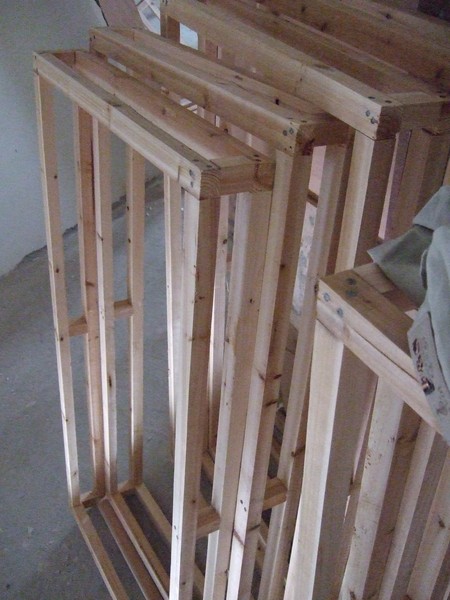
Stuffing all the corners full of fiberglass panels for bass trapping (then covered with breathable fabric):
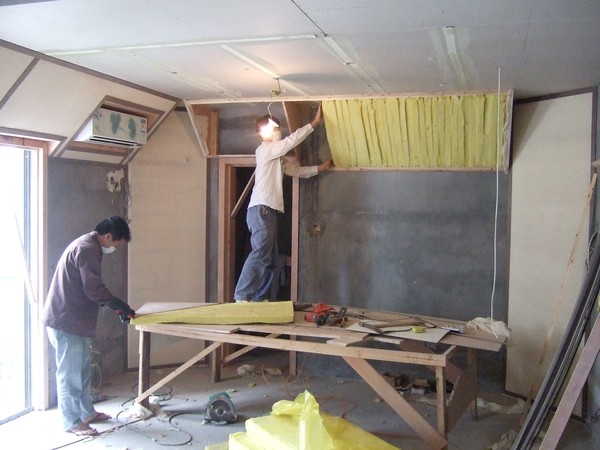
Closer look at the bass traps:
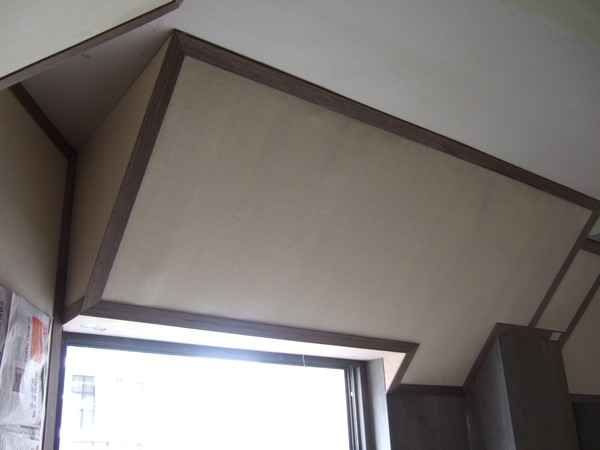
Unfinished first reflection traps (legs not painted yet):
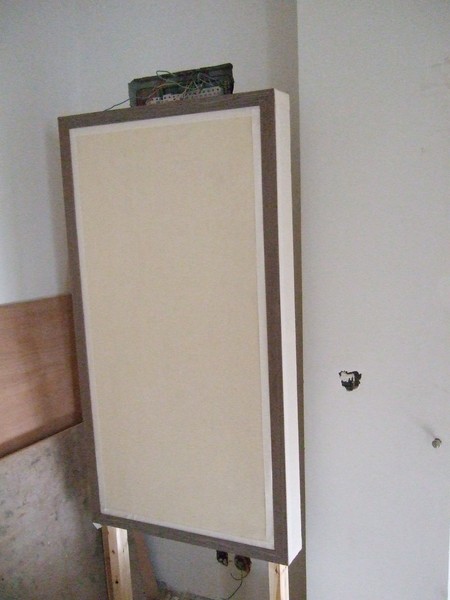
The computer noise isolation box is a big headache and I’m still trying to figure out if my design will really work or not. I guess unless I can get some certified expert to take a look at my design, I’ll only find out if I actually build the damn thing and test it. Here’s the current design (hand drawn in Photoshop):
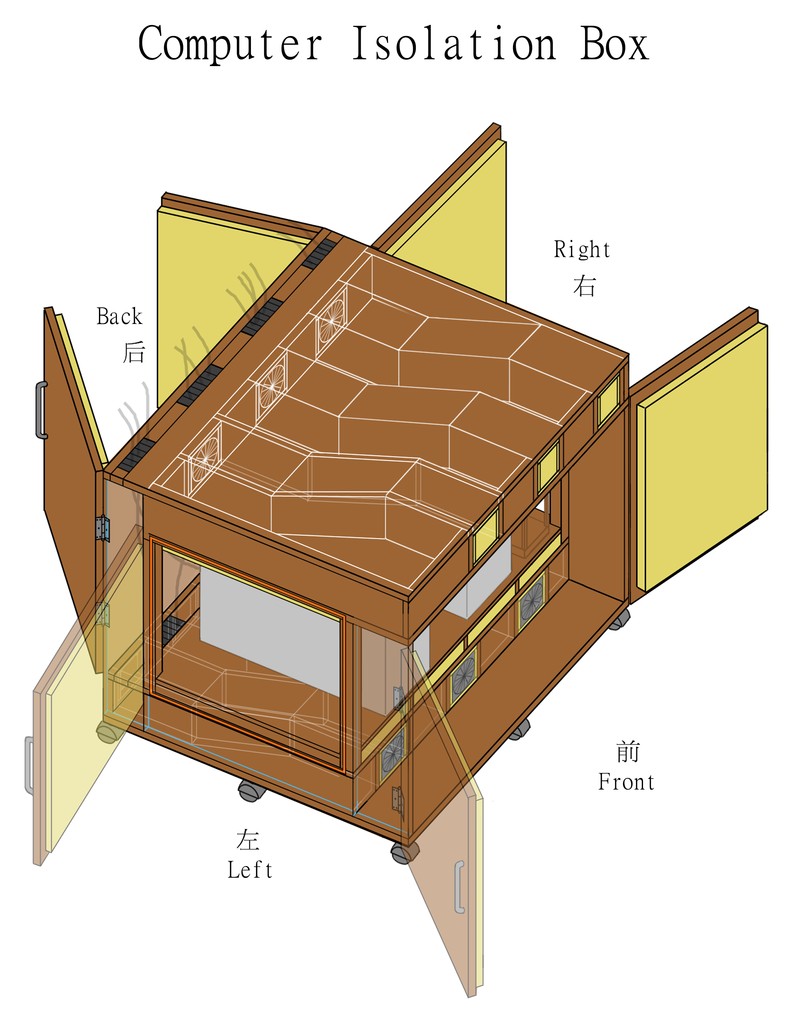
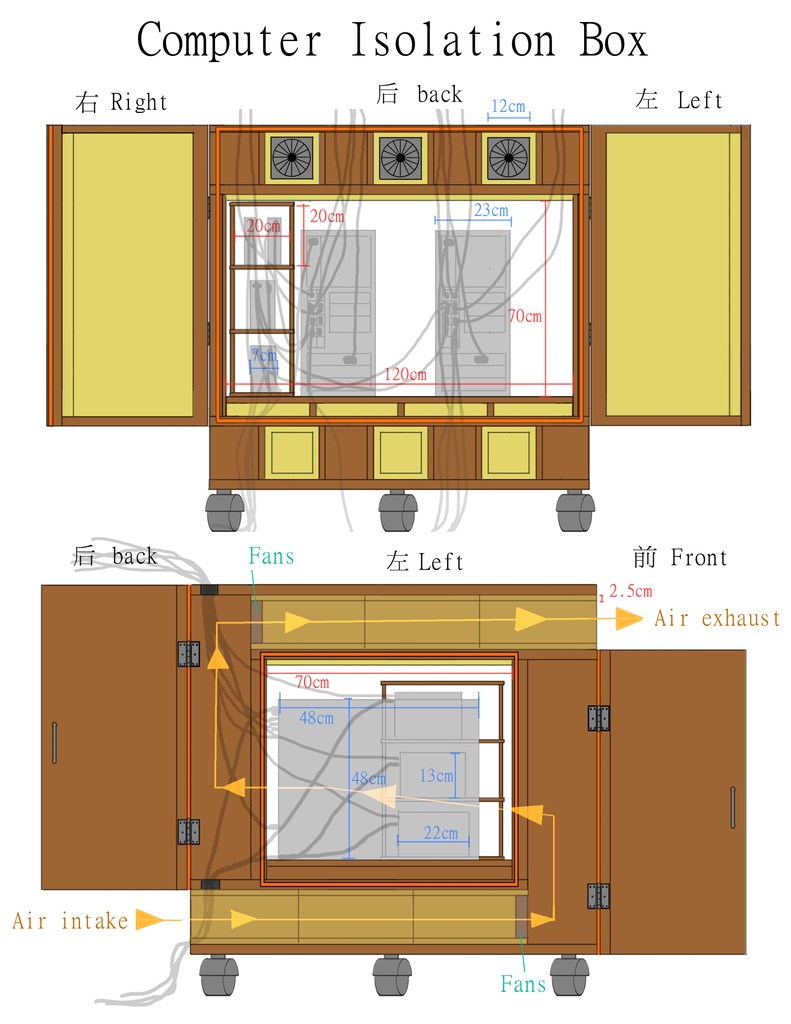
Here’s an alternative design for the airflow (not sure if it’ll make the box more quiet though):
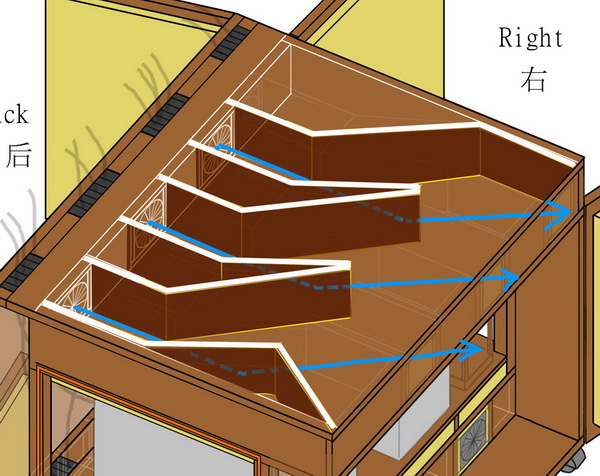
…
I remember falling in love with a particular style of harmonica playing many years ago (in particular on Morikawa Miho’s Holiday album, where she actually played the harmonica), and ever since then I’ve been toying with the idea of picking up the harmonica. Finally I’ve decided to take the plunge. I mean, I’m already playing four different instruments (guitar, keyboard, drums, bass), so what’s one more instrument? Besides, I need to have at least one instrument that requires me to use my lungs. I ordered a 16-hole chromatic (Suzuki SCX-64) and a couple of diatonics (Bushman Delta Frost in C, and Turboharp Twenty in Ab)–can’t wait to get started. I’ve promised myself that my next instrument will be the cello. That’s going to be expensive, but it’s one of my favorite instruments. I think it’s just as melodic and expressive as the violin, while having more gravity and tonal range.
I did some research and I found out the style of harmonica playing I love was actually pioneered by Toots Thielemans. If your impression of harmonica is either blues/rock or folk/ethnic, then you should take a listen to Toots–his wonderfully expressive and melodic style is nothing like what people usually associate with the harmonica. Listen to this short soundclip of his playing (from Hohner’s website, the track Velas from Quincy Jone’s 1970 album, I Never Told You): http://www.hohnerusa.com/multimedia/Toots.mp3
Just beautiful, isn’t it?
And if you want more technical dazzle, check out Larry Adler–his technical skills and expressiveness on the harmonica is just insane.
…
While researching on the harmonica (it’s far more complicated of an instrument than you’d think it is–I was very surprised), it got me thinking about just what is the most versatile and expressive instrument there is. The piano, guitar, and violin are usually considered the king of all instruments because of how expressive they can be, but they will always be limited by their physical forms. The piano cannot do sustain legato notes, and once the attack phase has passed you can no longer modulate the note that’s been played. The guitar is more expressive because it can do sustained notes via overdrive/effects, and there’s also note bending, hammer on and off, sliding, plucking, picking, strumming, fret-tapping, control with expression pedal, wah pedal…etc, and you can even bow it if you want. But the guitar is still limited due to its physical form–you can’t play more than six notes at a time, and the pitch range also has limits. The violin is considered one of the most expressive instruments, but the articulations and playing techniques are limited compared to the guitar, and there’s a limit to what you can achieve when playing pizzicato (your fingers can’t stand that much abuse).
So I thought about it for a while and I think the most expressive instrument today will have to be the synthesizer, because you can program any non-existing instrument with it, including combining characteristics of existing instruments with physical modeling–say, morph a piano with a cello and a guitar, and then be able to control various parameters with MIDI controllers such as breath controller, foot pedal, modwheel, ribbon strip…etc. I don’t know any other instrument that can morph between very percussive attack to very languid legato, while being able to control just about every parameter that could alter the timbre of a sound. Most people’s understanding of the synthesizer is cursory at best, and it’s like that even with most musicians. It’s only when you learn sound design do you realize the full power of synthesizers. Unfortunately, when it comes to real-time performance, the synthesizer doesn’t seem to be able to compete with acoustic instruments yet, since the physical control methods have not evolved enough at this point, or maybe just that not enough people are taking the time to work out a comprehensive system of mapping the most expressive parameters to controllers, and then master the skills required to perform them at an advanced level during live performances.
…
Quickie film/TV show reviews:
Hancock – Another interesting premise squandered. The plot twist completely destroyed what little there was to like about the film. Hancock could have been a really interesting character study, instead it turned into a pointless Hollywood drivel.
Iron Man – For every crappy superhero movie (Fantastic Four, for example), there should be a good one like Iron Man. It’s definitely one of the most entertaining and fun superhero movies ever made. It doesn’t try to apologize for being about a comic book character–it simply tries to tell a comic book story without patronizing the audience and being sincere about it. Robert Downey Jr. rocked as Tony Stark. A lot more charismatic than any of the Bruce Waynes portrayed thus far.
Forgetting Sarah Marshall – I was surprised by how much I liked this film. I think the one core element about it that I found most appealing was that it had a big heart. There was no malice. Too many comedies rely on cruel situations and depictions of despicable acts by people with serious flaws, but in this film, no one was portrayed as worthy of contempt. Even Sarah, who is the cause of much heartache, is really just girl who doesn’t really know what she wants–she’s not a mean bitch and has her moments where you genuinely feel sorry for her. The character Rachel (played by Mila Kunis) was a real delight. She was far cooler than I thought she’d turn out to be. The character of Aldous Snow was also a real surprise. From that first music video it seemed you can’t help but hate that pretentious asshole, but he actually turned out to be a nice guy in general. And of course, you wouldn’t watch this if you didn’t already like Jason Segel. I may not have wanted to see his danglies over and over right at the beginning of the film, but I guess the ladies enjoyed it.
Mad Men (Season One) – It seems so odd that someone would want to do a TV series about an ad agency in the 1960’s, but as soon as you start watching you realize why. The contrast of that society and today’s form a very interesting dynamic, where you can see and trace how some of today’s norms had their beginnings back then, and just how much society has changed, or remained the same. If the show was about a present day ad agency it wouldn’t be nearly as intriguing. It’s always a real treat when the backdrop for the premise is like a character in of itself.
Just found your blog through Ballistic Publishing’s website. I love your work and a lot of your various philosophies and ideas. I did have a comment about your isolation box; it’s an awesome idea but you are missing a critical element, filtration. You should probably add removable air filters (one for each air passage), this will help keep the dust down inside your case and ultimately your machines. Why spend more time cleaning your machines and the inside of your box than you have too? 🙂 You may even make the filtration a 2-stage unit (filtration box, if you will) with a coarse filter (maybe bath scrunchie type material or similar) on the intake side of it and a finer filter (think stretched nylon stocking type material) on the exhausted air side of the filter box/module. The filtration module would probably have to be no more than 3-4″ thick to allow a small air gap between the two filter media. I’m might be over-complicating it a bit in my explanation. The idea is to be able to slot-load these filters for easy cleaning and replacement without having to disturb your setup at all. Just an idea.
J
Also, I’m not sure why the exhaust fans are facing the front. I would think you would want to reverse the facing of your fans so you pull cool air from an open space and force hot air out the back. I’m not really what the answer is here but personally I wouldn’t want three fans venting the heat my single machine throws out, towards my open work area. Plus I think it would be quieter since the exhaust fans would be further away from you distance-wise.
J
Err, I’m flooding your comments section, sorry. I should really analyze things better before I comment someone to death. Last one, I promise.
I see you already have the fans in the back of the box. I would probably just ventilate out the back right where you have them. That will also allow for a shorter distance to push hot air out of the box. It might not be AS quiet as your design at the moment, but when it comes to computers you have to balance acoustics with ventilation. Perhaps you can get lower rpm but larger diameter fans for your exhaust ducts to help with that balance and not have to worry so much about the heat wave you’ll get with your current design every time you walk by it. Of course my advice all depends on your placement of this isolation box in your studio too.
J
Jason – For the fans, I’ll be using the largest size possible (120mm), and ideally with heat-sensing so the speed of the fans will self-adjust according to the temperature inside the box.
I actually just very recently thought about filtration, so yes, it’s already on my mind–I just need to incorporate it in the drawings. Thanks for the suggestions!
The noise level should at the very least be below 30db, and ideally closer to 20db, so that’s asking a lot. I’m told that the more 90-degree turns I can introduce into the air ducts, the quieter things will be. Right now I think the box will be around 10 degrees higher on the inside and that’s a bit higher than ideal. I’m trying to think of a way to add cooling to the system, but I’m not sure how I can do it without also adding more noise. One idea is to put a small AC unit in a closet and pipe the cool air to the ISO box–we’ll see.
Do they have to be auto-sensing or do you think you might be willing to make your own sensor? There are 250mm fans put out
Not sure if my note got cut off, I’m only seeing part of it. I did include some urls for bigger fans and schematics for making your own temp sensors for a couple bucks. Just in case, go to heatsink-guide dot com and click on temperature control in the menu. Pretty nifty, eh? 🙂 Hopefully that opens your options up a bit.
J
Jason – Yeah, it looks like your comment did get cut off–there’s no URL. I’ll check out the link and see if I can do any DIY heat sensing stuff. I didn’t know they made 250mm fans–that’s huge! How the hell do people incorporate 250mm fans into a computer? I took a look and you’d have to expose the entire side of your computer to use such a fan size–wouldn’t that be exposing even more of your computer’s noise to the outside? I’m not sure how I’d use them in an ISO box either.
I think there was a case design that brought this size about (Turbo-something or other) that incorporated one of those 250mm fans into the bottom of the front of the case, kind of made to look like a jet engine. It was pretty cool to look at. The thing about those fans is that they are pretty quiet, believe it or not, they push about 105cfm at less than 25db. Those are obviously way too big for your application unless you do some serious redesign. The idea is that they do make a few sizes in between as well. Check out the Newegg site for case cooling fan products. I think their power search goes up to 120mm but you will see the “more” link under the search list that will reveal the larger sizes.
For a similar case to the one I was referring to, search for Tagan CS-EL Diablo Gaming Computer Case.
J